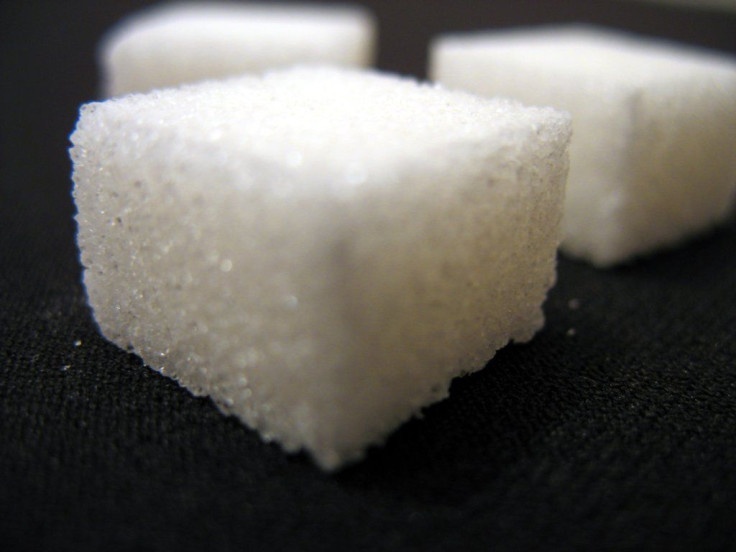Cutting Out Sugar Drastically Improves Overall Health Among Obese Children; Sugar Actually Is Toxic To Humans

Sugar is making children sick and it’s not just because of the extra pounds it adds to their waists — it’s also due to the way it breaks down in the body, according to a new study. Researchers from University of California San Francisco collaborated with Touro University California to figure out what would happen if they controlled a group of obese children’s diets and cut out all the sugar for nine days. What they found may prove that sugar is toxic to the human body.
"This study definitively shows that sugar is metabolically harmful not because of its calories or its effects on weight; rather sugar is metabolically harmful because it's sugar," said the study’s lead author Dr. Robert Lustig, pediatric endocrinologist at UCSF Benioff Children's Hospital San Francisco, in a press release. "This study is a solid indication that sugar contributes to metabolic syndrome and is the strongest evidence to date that the negative effects of sugar are not because of calories or obesity."
Lustig and his team studied 43 obese children between the ages of 9 and 18. Each child had at least one chronic metabolic disorder like high blood pressure or high levels of blood-fat content. Researchers measured and recorded each child’s blood sugar levels, blood pressure, and glucose tolerance prior to the experiment. Then for nine days, they were given food, snacks, and beverages devoid of added sugar, and kept under constant observation to ensure they followed the diet.
According to the U.S. Department of Agriculture, added sugar is exactly what it sounds like: sugar and syrups added to foods and beverages during production. Fruits and dairy products also contain sugar, but they’re naturally occurring and therefore breakdown inside the body differently than added sugar, which is why the participants were allowed to eat fruit during their restricted diets. The children were also allowed to eat bagels, cereal, and pasta in order to maintain the same number of calories from carbohydrates they were eating before the diet began.
Participants were also given “kid food,” like turkey hot dogs, potato chips, and pizza, purchased from local supermarkets in order to make the study more realistic. The only real difference was that their total dietary sugar was cut from 28 percent to 10 percent, and their fructose — mostly consumed in the form of high fructose corn syrup — was cut from 12 to 4 percent.
What Happens When Kids Are Cut Off
"When we took the sugar out, the kids started responding to their satiety cues," said the study’s senior author Jean-Marc Schwarz, a professor at the College of Osteopathic Medicine at Touro University California, in a press release. "They told us it felt like so much more food, even though they were consuming the same number of calories as before, just with significantly less sugar. Some said we were overwhelming them with food."
The researchers wanted to see just how much a child’s health could benefit from cutting added sugar from their diet. And after nine days, nearly every aspect of their metabolic health improved. All of them saw drops in blood pressure, bad cholesterol levels, and blood-fat content, while liver function improved. Insulin levels were also cut by one-third — a result of eating less carbohydrates and sugar, this lowers risk of developing diabetes.
"I have never seen results as striking or significant in our human studies; after only nine days of fructose restriction," Schwarz said. "The results are dramatic and consistent from subject to subject. These findings support the idea that it is essential for parents to evaluate sugar intake and to be mindful of the health effects of what their children are consuming."
The average American consumes a lot of sugar — 22 teaspoons of added sugar a day, which adds up to an extra 350 empty calories. But according to Lustig, it’s not the extra calories that are the concern, but rather how sugar is broken down inside the body that makes it toxic.
When table sugar, otherwise known as sucrose, is digested in the body, half of it is comprised of fructose while the other half is glucose. Because glucose isn’t as sweet as fructose, people often try to compensate by eating more fructose, hence why it was the focus of Lustig’s study. Fructose is found in many fruits and vegetables, but when it’s processed, it’s added to desserts, breads, and flavored drinks as added sugar. This sugar is then filtered through the liver, where it cues the release of insulin, and subsequently stimulates the production of leptin. Also known as the hunger hormone, leptin controls calorie cravings by telling the brain when to eat. In this instance, it would’ve told the kids to eat more.
“A calorie is not a calorie,” Lustig said, explaining the common misconception that all calories are created equal. “Where those calories come from determines where in the body they go. Sugar calories are the worst, because they turn to fat in the liver, driving insulin resistance, and driving risk for diabetes, heart, and liver disease. This has enormous implications for the food industry, chronic disease, and health care costs.”
Source: Lustig R and Schwarz JM, et al. Obesity. 2015.



























